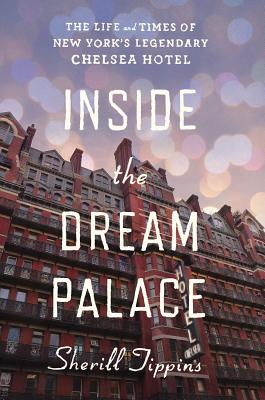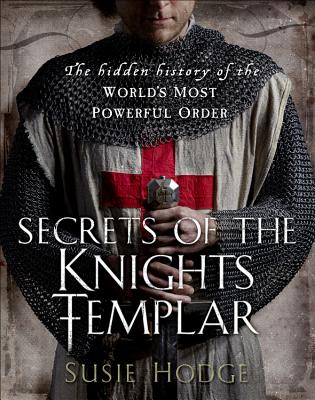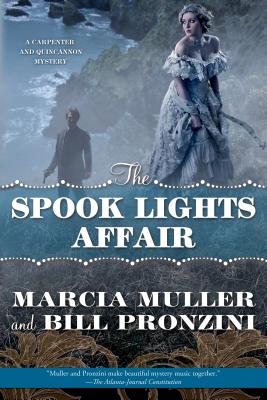In 1968, a small, dilapidated American spy ship set out on a dangerous mission: to pinpoint military radar stations along the coast of North Korea. Packed with advanced electronic-surveillance equipment and classified intelligence documents, the USS Pueblo was poorly armed and lacked backup by air or sea. Its crew, led by a charismatic, hard-drinking ex–submarine officer named Pete Bucher, was made up mostly of untested sailors in their teens and twenties.
On a frigid January morning while eavesdropping near the port of Wonsan, the Pueblo was challenged by a North Korean gunboat. When Bucher tried to escape, his ship was quickly surrounded by more patrol boats, shelled and machine-gunned, and forced to surrender. One American was killed and ten wounded, and Bucher and his young crew were taken prisoner by one of the world’s most aggressive and erratic totalitarian regimes.
Less than forty-eight hours before the Pueblo’s capture, North Korean commandos had nearly succeeded in assassinating South Korea’s president in downtown Seoul. Together, the two explosive incidents pushed Cold War tensions toward a flashpoint as both North and South Korea girded for war—with fifty thousand American soldiers caught between them. President Lyndon Johnson rushed U.S. combat ships and aircraft to reinforce South Korea, while secretly trying to negotiate a peaceful solution to the crisis.
Act of War tells the riveting saga of Bucher and his men as they struggled to survive merciless torture and horrendous living conditions in North Korean prisons. Based on extensive interviews and numerous government documents released through the Freedom of Information Act, this book also reveals new details of Johnson’s high-risk gambit to prevent war from erupting on the Korean peninsula while his negotiators desperately tried to save the sailors from possible execution. A dramatic tale of human endurance against the backdrop of an international diplomatic poker game, Act of War offers lessons on the perils of covert intelligence operations as America finds itself confronting a host of twenty-first-century enemies.
On a frigid January morning while eavesdropping near the port of Wonsan, the Pueblo was challenged by a North Korean gunboat. When Bucher tried to escape, his ship was quickly surrounded by more patrol boats, shelled and machine-gunned, and forced to surrender. One American was killed and ten wounded, and Bucher and his young crew were taken prisoner by one of the world’s most aggressive and erratic totalitarian regimes.
Less than forty-eight hours before the Pueblo’s capture, North Korean commandos had nearly succeeded in assassinating South Korea’s president in downtown Seoul. Together, the two explosive incidents pushed Cold War tensions toward a flashpoint as both North and South Korea girded for war—with fifty thousand American soldiers caught between them. President Lyndon Johnson rushed U.S. combat ships and aircraft to reinforce South Korea, while secretly trying to negotiate a peaceful solution to the crisis.
Act of War tells the riveting saga of Bucher and his men as they struggled to survive merciless torture and horrendous living conditions in North Korean prisons. Based on extensive interviews and numerous government documents released through the Freedom of Information Act, this book also reveals new details of Johnson’s high-risk gambit to prevent war from erupting on the Korean peninsula while his negotiators desperately tried to save the sailors from possible execution. A dramatic tale of human endurance against the backdrop of an international diplomatic poker game, Act of War offers lessons on the perils of covert intelligence operations as America finds itself confronting a host of twenty-first-century enemies.
October 1936. Spanish architect Ignacio Abel arrives at Penn Station, the final stop on his journey from war-torn Madrid, where he has left behindhis wife and children, abandoning them to uncertainty. Crossing the fragile borders of Europe, he reflects on months of fratricidal conflict inhis embattled country, his own transformation from a bricklayer’s son to a
respected bourgeois husband and professional, and the clandestine, all- consuming love affair with an American woman that forever alters his life.
Hailed as a masterpiece, In the Night of Time is a sweeping, grand novel and an indelible portrait of a shattered society, written by one of Spain’s most important contemporary novelists.
The next best thing to having a room key to the Chelsea Hotel during each of its famous--and infamous--decades
The Chelsea Hotel, since its founding by a visionary French architect in 1884, has been an icon of American invention: a cultural dynamo and haven for the counterculture, all in one astonishing building. Sherill Tippins, author of the acclaimed February House, delivers a masterful and endlessly entertaining history of the Chelsea and of the successive generations of artists who have cohabited and created there, among them John Sloan, Edgar Lee Masters, Thomas Wolfe, Dylan Thomas, Arthur Miller, Allen Ginsberg, Bob Dylan, Janis Joplin, Leonard Cohen, Patti Smith, Robert Mapplethorpe, Andy Warhol, Sam Shepard, Sid Vicious, and Dee Dee Ramone. Now as legendary as the artists it has housed and the countless creative collaborations it has sparked, the Chelsea has always stood as a mystery as well: Why and how did this hotel become the largest and longest-lived artists' community in the known world? Inside the Dream Palace is the intimate and definitive story.
Today the Chelsea stands poised in limbo between two futures: Will this symbol of New York's artistic invention be converted to a profit-driven business catering to the top one percent? Or will the Chelsea be given a rebirth through painstaking effort by the community that loves it? Set against these two competing possibilities, Inside the Dream Palace could not be more fascinating or timely.
Informally organized in 1119 to protect pilgrims on their journeys to visit the Holy Land, and officially sanctioned by the Catholic Church in 1129, the medieval Knights Templar grew into an elite fighting force that played a central role in the battles of the Crusades. They were highly trained, well equipped, and unafraid to take up the sword to defend the church at the limits of western civilization.
Secrets of the Knights Templar is the compelling chronicle of the warrior monks and their fight to defend the Catholic faith, and of their participation in the efforts to vie for control of the Holy Land with the Muslim armies of Kurdish military genius Saladin and his successors. Though they were initially celebrated for their military acumen and acts of bravery, the once-celebrated order was eventually dismantled in disgrace, accused of political crimes as well as crimes against the faith.
With its concise, authoritative, and accessible narrative—amplified by extensive citations from contemporary sources, and accompanied by generously captioned and stunning images of the period—Secrets of the Knights Templar brings a distant era of history dramatically and vividly to life. It is the perfect gift for anyone with a love of medieval, religious, or military history.
This richly entertaining biography chronicles the eventful life of Queen Victoria’s firstborn son, the quintessential black sheep of Buckingham Palace, who matured into as wise and effective a monarch as Britain has ever seen. Granted unprecedented access to the royal archives, noted scholar Jane Ridley draws on numerous primary sources to paint a vivid portrait of the man and the age to which he gave his name.
Born Prince Albert Edward, and known to familiars as “Bertie,” the future King Edward VII had a well-earned reputation for debauchery. A notorious gambler, glutton, and womanizer, he preferred the company of wastrels and courtesans to the dreary life of the Victorian court. His own mother considered him a lazy halfwit, temperamentally unfit to succeed her. When he ascended to the throne in 1901, at age fifty-nine, expectations were low. Yet by the time he died nine years later, he had proven himself a deft diplomat, hardworking head of state, and the architect of Britain’s modern constitutional monarchy.
Jane Ridley’s colorful biography rescues the man once derided as “Edward the Caresser” from the clutches of his historical detractors. Excerpts from letters and diaries shed new light on Bertie’s long power struggle with Queen Victoria, illuminating one of the most emotionally fraught mother-son relationships in history. Considerable attention is paid to King Edward’s campaign of personal diplomacy abroad and his valiant efforts to reform the political system at home. Separating truth from legend, Ridley also explores Bertie’s relationships with the women in his life. Their ranks comprised his wife, the stunning Danish princess Alexandra, along with some of the great beauties of the era: the actress Lillie Langtry, longtime “royal mistress” Alice Keppel (the great-grandmother of Camilla Parker Bowles), and Lady Randolph Churchill, mother of Winston.
Edward VII waited nearly six decades for his chance to rule, then did so with considerable panache and aplomb. A magnificent life of an unexpectedly impressive king, The Heir Apparent documents the remarkable transformation of a man—and a monarchy—at the dawn of a new century.
In 1895 San Francisco young debutantes don’t commit suicide at festive parties, particularly not under the eye of Sabina Carpenter. But Virginia St. Ives evidently did, leaping from a foggy parapet in a shimmer of ghostly light. The seemingly impossible disappearance of her body creates an even more serious problem for the firm of Carpenter and Quincannon, Professional Detective Services.
Sabina hadn’t wanted to take the assignment, but her partner John Quincannon insisted it would serve as entrée to the city’s ultra rich and powerful. That means money, and Quincannon loves the almighty dollar. Which is why he is hunting the bandit who robbed the Wells, Fargo office of $35,000.
Working their separate cases (while Sabina holds John off with one light hand), the detectives give readers a tour of The City the way it was. From the infamous Barbary Coast to the expensive Tenderloin gaming houses and brothels frequented by wealthy men, Quincannon follows a danger-laden trail to unmask the murderous perpetrators of the Wells, Fargo robbery. Meanwhile, Sabina works her wiles on friends and relatives of the vanished debutante until the pieces of her puzzle start falling into place. But it’s an oddly disguised gent appearing out of nowhere who provides the final clue to both cases—the shrewd “crackbrain” who believes himself to be Sherlock Holmes.
Fans of Marcia’s Muller’s bestselling Sharon McCone novels and Bill Pronzini’s Nameless Detective series will applaud The Spook Lights Affair and future exploits from the annals of Carpenter and Quincannon, Professional Detective Services.
At long last, the epic biography Ted Williams deserves--and that his fans have been waiting for.
Williams was the best hitter in baseball history. His batting average of .406 in 1941 has not been topped since, and no player who has hit more than 500 home runs has a higher career batting average. Those totals would have been even higher if Williams had not left baseball for nearly five years in the prime of his career to serve as a Marine pilot in WWII and Korea. He hit home runs farther than any player before him--and traveled a long way himself, as Ben Bradlee, Jr.'s grand biography reveals. Born in 1918 in San Diego, Ted would spend most of his life disguising his Mexican heritage. During his 22 years with the Boston Red Sox, Williams electrified crowds across America--and shocked them, too: His notorious clashes with the press and fans threatened his reputation. Yet while he was a God in the batter's box, he was profoundly human once he stepped away from the plate. His ferocity came to define his troubled domestic life. While baseball might have been straightforward for Ted Williams, life was not.
The Kid is biography of the highest literary order, a thrilling and honest account of a legend in all his glory and human complexity. In his final at-bat, Williams hit a home run. Bradlee's marvelous book clears the fences, too.
Williams was the best hitter in baseball history. His batting average of .406 in 1941 has not been topped since, and no player who has hit more than 500 home runs has a higher career batting average. Those totals would have been even higher if Williams had not left baseball for nearly five years in the prime of his career to serve as a Marine pilot in WWII and Korea. He hit home runs farther than any player before him--and traveled a long way himself, as Ben Bradlee, Jr.'s grand biography reveals. Born in 1918 in San Diego, Ted would spend most of his life disguising his Mexican heritage. During his 22 years with the Boston Red Sox, Williams electrified crowds across America--and shocked them, too: His notorious clashes with the press and fans threatened his reputation. Yet while he was a God in the batter's box, he was profoundly human once he stepped away from the plate. His ferocity came to define his troubled domestic life. While baseball might have been straightforward for Ted Williams, life was not.
The Kid is biography of the highest literary order, a thrilling and honest account of a legend in all his glory and human complexity. In his final at-bat, Williams hit a home run. Bradlee's marvelous book clears the fences, too.







No comments:
Post a Comment